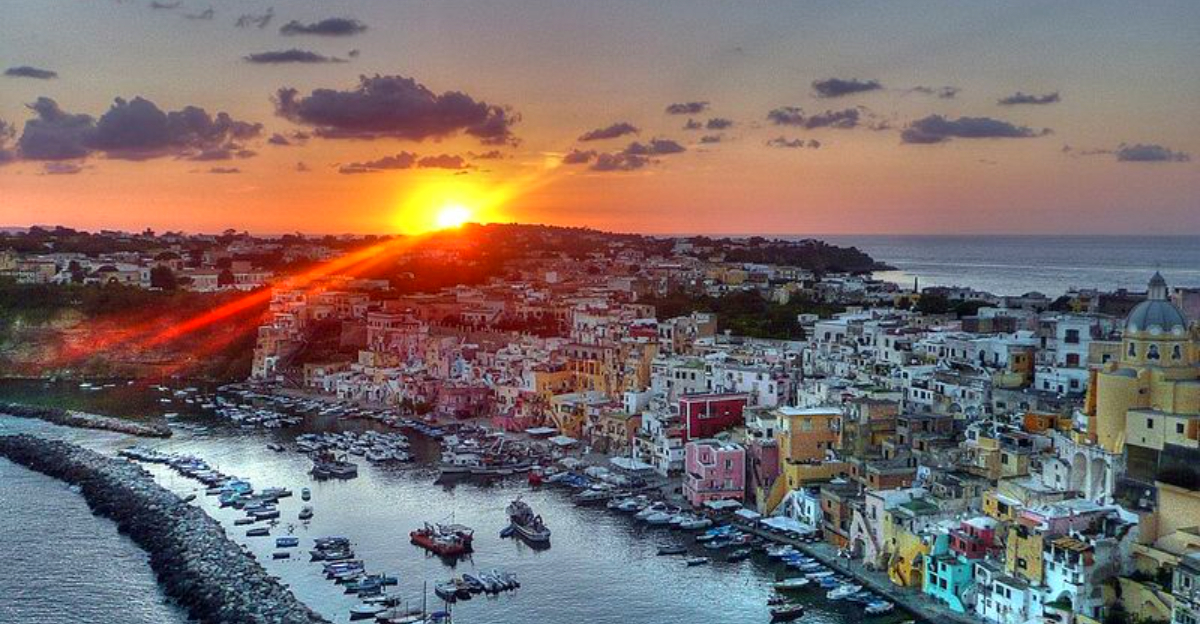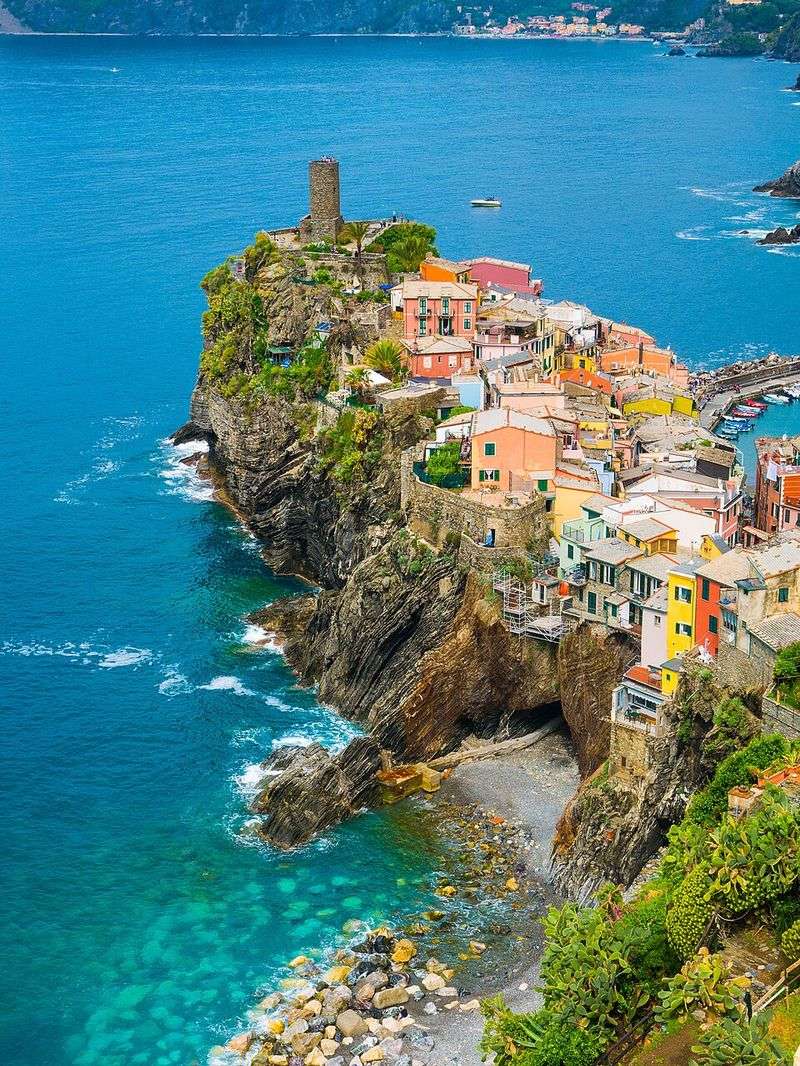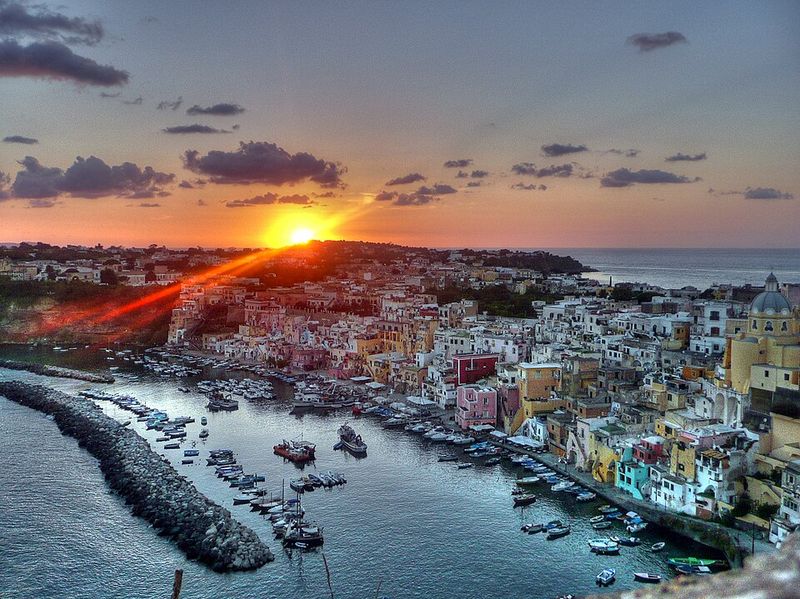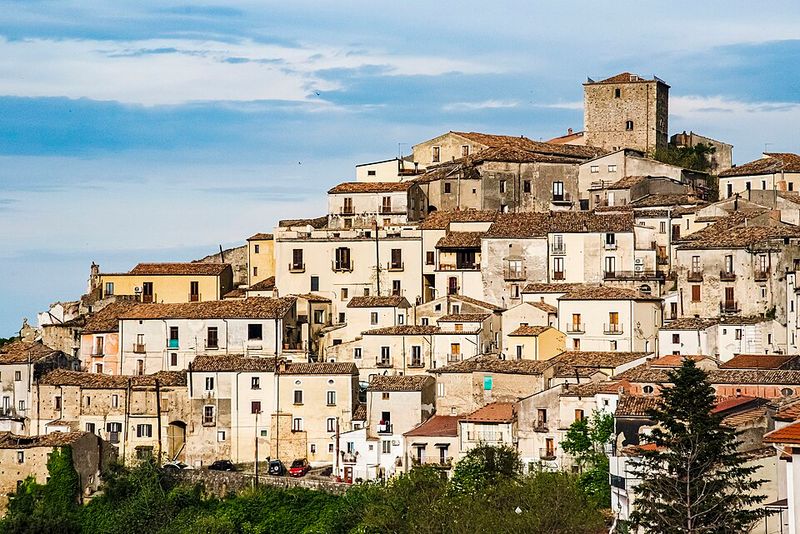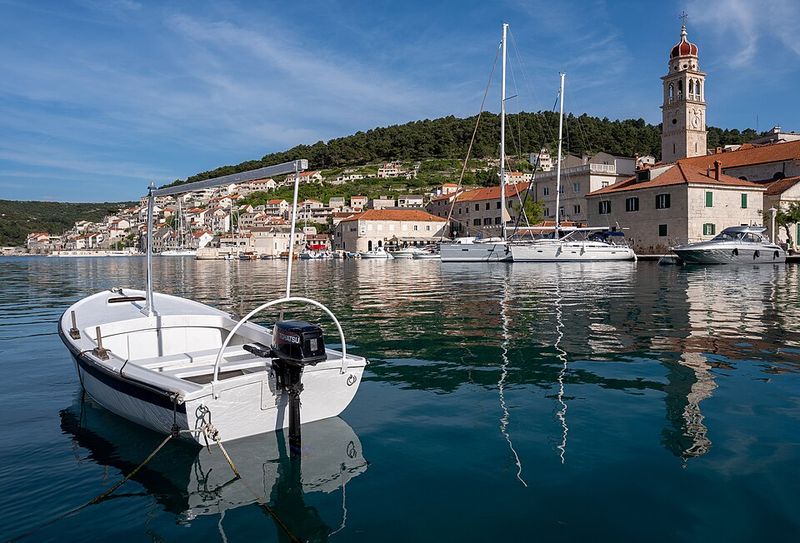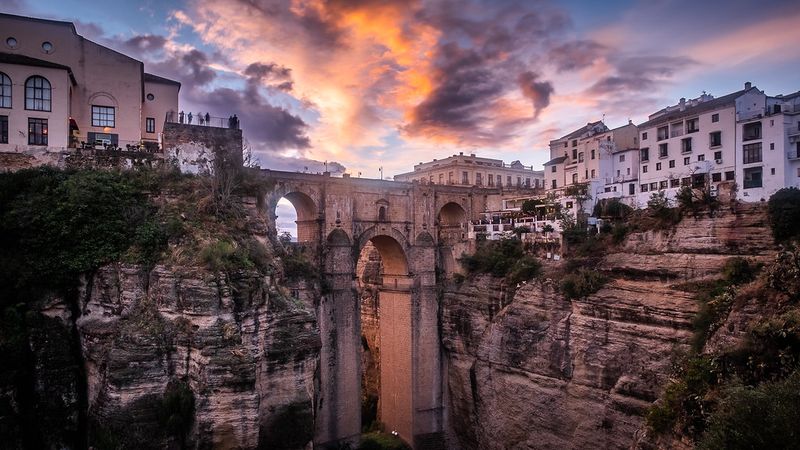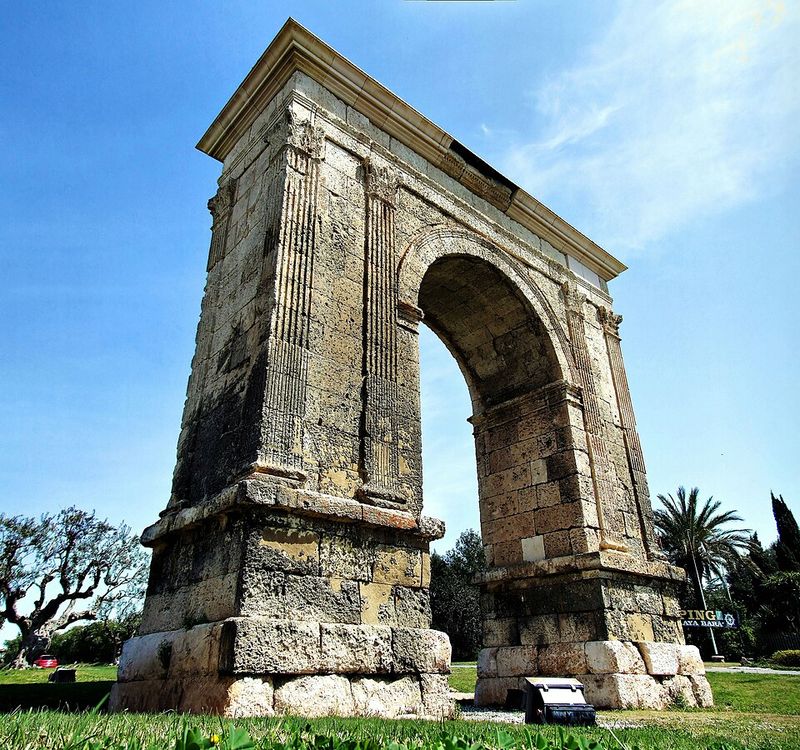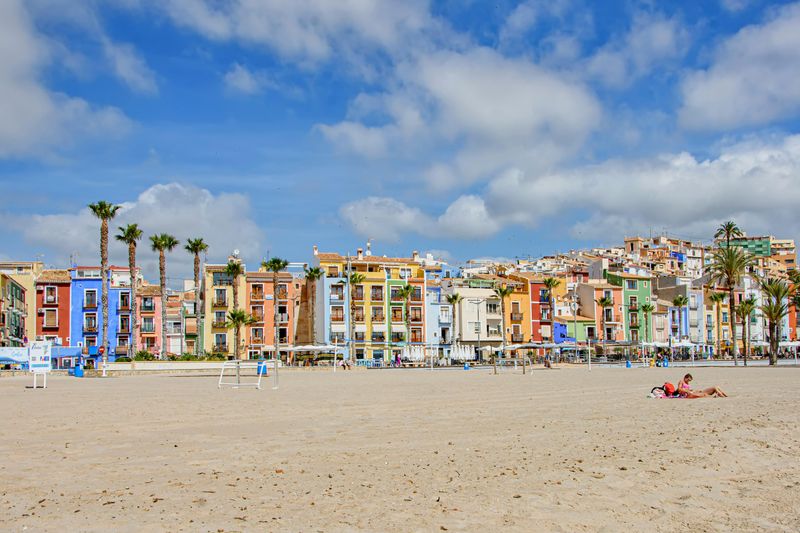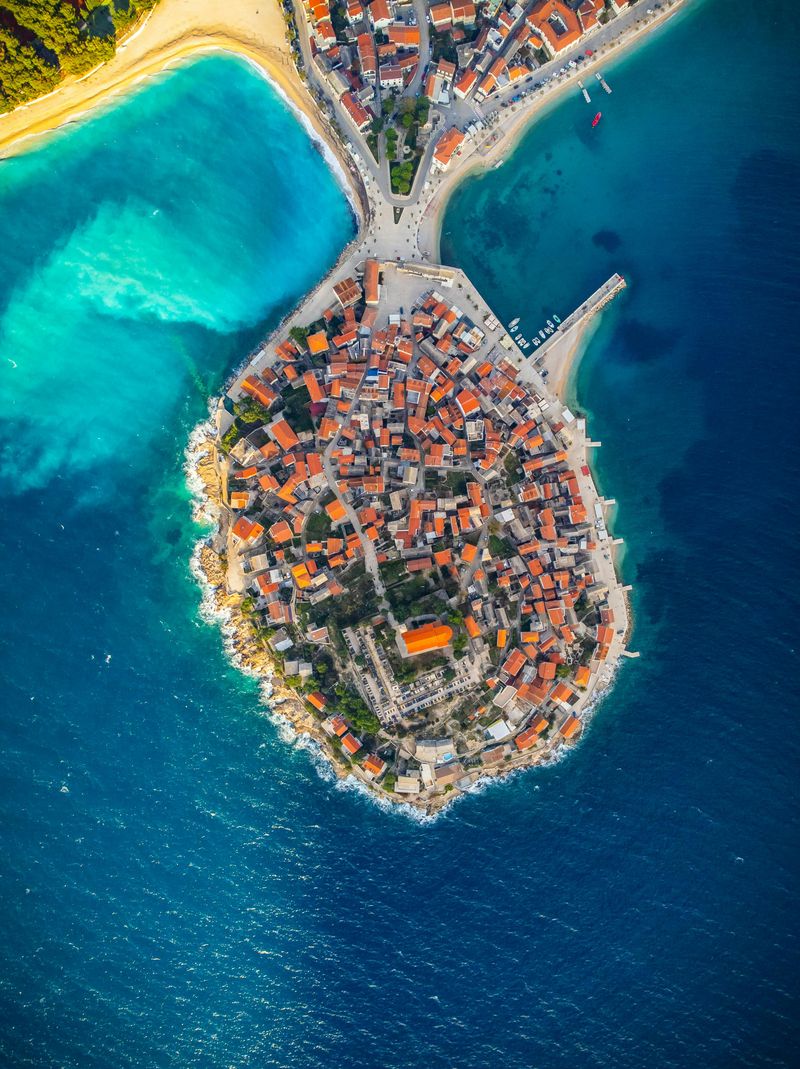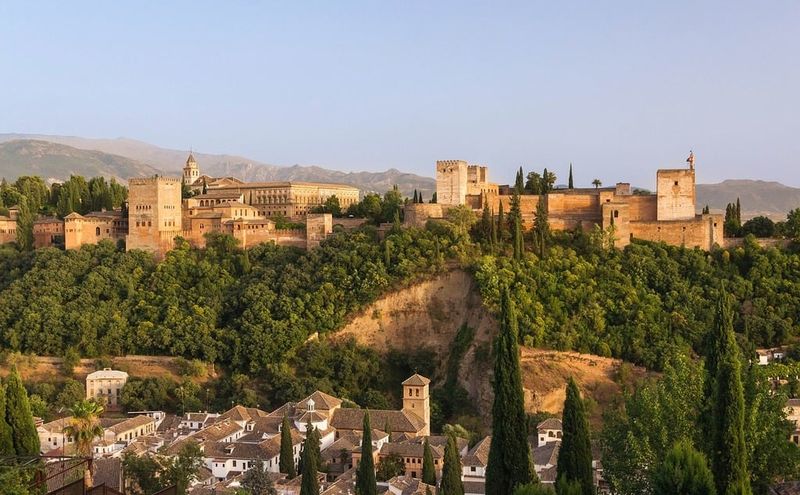Southern Europe holds some of the world’s most breathtaking towns, where colorful houses tumble down cliffsides and ancient stone streets wind through hilltop villages. From sun-drenched harbors in Italy to dramatic gorges in Spain, these places look like they’ve been painted onto canvas. Whether you’re planning your next adventure or just daydreaming about faraway places, these towns offer beauty that will make your camera work overtime.
Vernazza, Italy
Perched along the rugged Ligurian coast, Vernazza stands out as perhaps the most photogenic of Cinque Terre’s five villages. Pastel houses in shades of pink, yellow, and orange cascade down the hillside toward a tiny natural harbor where fishing boats bob gently in the water. Steep terraces carved into the cliffs above still grow grapes for the region’s famous wines.
What makes this village so camera-ready is its perfect composition—the harbor sits right at the center, surrounded by colorful buildings that seem to stack on top of each other. The sea stretches out below, creating layers of blue against the warm-toned architecture.
Climb up to the castle ruins perched above the village for the best panoramic views, then make your way down to the small pebble beach for a refreshing swim.
Portofino, Italy
Along the Italian Riviera sits a harbor so stunning it’s become a magnet for celebrities and luxury yachts from around the world. Portofino’s waterfront curves in a gentle crescent, lined with buildings painted in vibrant yellows, pinks, oranges, and reds that reflect beautifully in the calm harbor waters. Behind the village, steep green hills covered in Mediterranean vegetation create a dramatic backdrop.
The scene feels almost too perfect to be real—like someone carefully arranged every building and boat for maximum visual impact. Yet this fishing village has looked essentially the same for centuries, long before it became a playground for the wealthy.
Walk along the waterfront path toward the lighthouse for stunning views back toward the harbor, or take a boat ride to see the village from the water.
Corricella, Italy
On the small island of Procida in the Bay of Naples, Corricella remains one of southern Italy’s best-kept secrets. This ancient fishing port explodes with color—houses painted in cheerful shades of pink, lemon yellow, coral, and sky blue line the curved waterfront like a rainbow brought to life. The colors reflect in the gentle harbor waters, doubling the visual feast.
Unlike some tourist-heavy destinations, Corricella maintains its authentic character. Fishermen still mend their nets along the harbor, and laundry flutters from balconies overlooking the sea. The effect is storybook-perfect without feeling staged or artificial.
Visit during sunset when golden light bounces off the pastel façades, then wander through the narrow lanes behind the waterfront to discover hidden staircases and quiet corners.
Altomonte, Italy
High in the mountains of Calabria, Altomonte earns its place among Italy’s “most beautiful villages” with good reason. This medieval hill town crowns a commanding hilltop, its ancient stone walls and buildings seeming to grow naturally from the rock itself. From the old town walls, sweeping views stretch across valleys and distant mountains, creating vistas that transport visitors back centuries.
What sets Altomonte apart is how well-preserved its medieval character remains. Narrow cobblestone streets wind between stone houses, leading to quiet piazzas where locals still gather. The architecture tells stories of Norman, Swabian, and Aragonese rulers who once controlled this strategic hilltop.
Explore the panoramic viewpoints from the old fortification walls, then lose yourself in the peaceful side streets where few tourists venture, discovering the town’s authentic rhythm.
Pučišća, Croatia
Carved from the same white limestone that built parts of the White House in Washington, Pučišća on the island of Brač creates a striking visual impression. The town’s buildings, all constructed from local stone, glow almost silver in bright sunlight and curve around a protected bay in an amphitheater-like arrangement. Behind the waterfront, steep island hills add dramatic height to the scene.
The uniform stone color gives Pučišća a cohesive, harmonious appearance that photographs beautifully from any angle. This quarrying town has shaped stone for centuries, and that craftsmanship shows in every carefully constructed building and wall.
Relax at one of the waterfront cafés with a coffee and Croatian pastry, then climb to a hillside viewpoint for spectacular photos looking down over the entire bay and town below.
Ronda, Spain
Few towns make as dramatic a first impression as Ronda. This Andalusian gem sits atop a towering cliff, split in two by a gorge so deep it makes your stomach flip just looking down. The famous Puente Nuevo bridge spans this 120-meter-deep chasm, connecting the old Moorish town with the newer district while providing one of Spain’s most photographed views.
White-washed houses typical of Andalusia cling to the cliff edges on both sides, creating scenes that belong in adventure movies. The combination of the gap in the rock, the elegant stone bridge, and the precarious positioning of buildings produces pure cinema.
Walk across the bridge for thrilling views straight down into the gorge, then explore the old town’s many balconies and viewpoints that let you peer into the dramatic depths below.
Roda de Berà, Spain
Along Catalonia’s Costa Dorada, Roda de Berà offers something many beach towns lack—a perfectly preserved Roman monument right in the middle of town. The Arc de Berà, a triumphal arch built nearly 2,000 years ago, stands as a reminder of the ancient Via Augusta that once connected Rome with Cádiz. This combination of ancient history, golden beaches, and Mediterranean charm creates a uniquely appealing destination.
The town maintains a relaxed, authentic feel despite its coastal location. Local families fill the beaches in summer, and the promenade comes alive with evening strollers enjoying the sea breeze. The mix of historical significance and seaside leisure makes it postcard-worthy from multiple angles.
Visit the impressive Roman arch just outside town, then walk the beachfront promenade as the Mediterranean sun sets over the water.
Villajoyosa, Spain
Known locally as La Vila Joiosa (The Joyful Town), Villajoyosa lives up to its cheerful name with one of Spain’s most colorful waterfronts. Houses painted in vivid reds, blues, greens, yellows, and oranges line the harbor and beach, creating a rainbow effect that photographers adore. Legend says fishermen painted their homes in bright colors so they could spot them from the sea.
Beyond its Instagram-worthy façades, this Costa Blanca town maintains strong traditions, including a chocolate-making heritage dating back centuries. Local factories still produce artisan chocolates using traditional methods, adding sweet-smelling authenticity to the colorful streets.
Wander through the old town by the harbor where the most vibrant houses cluster, then stop at one of the traditional chocolate shops to sample the local specialty that’s been perfected over generations.
Primošten, Croatia
Connected to the mainland by a narrow causeway, Primošten sits on a small peninsula jutting into the turquoise Adriatic like a stone ship frozen in time. This medieval Dalmatian town clusters tightly on its rocky outcrop, with stone houses and winding alleys spiraling upward toward the hilltop church of St. George. The compact, circular layout creates perfect symmetry when viewed from above or from the water.
What makes Primošten special is its balance—historic architecture meets stunning sea views in a setting that feels wonderfully preserved yet welcoming. Vineyards on the nearby hills produce excellent wines, and the town maintains its quiet, authentic character despite its obvious beauty.
Climb the narrow stone lanes to the church at the summit for panoramic views over the town, peninsula, and sparkling Adriatic, then explore the atmospheric old streets below.
Granada, Spain
Where Moorish palaces meet snowy mountain peaks, Granada offers visual richness that few cities can match. The magnificent Alhambra fortress-palace dominates a hill overlooking the city, its red walls and elegant towers standing out against the white-washed houses of the historic Albayzín quarter below. Behind everything, the Sierra Nevada mountains provide a dramatic alpine backdrop that seems almost impossible in southern Spain.
This layering of history, architecture, and landscape creates endless postcard opportunities. Narrow streets in the old Arab quarter wind upward past flower-filled patios and traditional tea houses, while viewpoints offer stunning perspectives of the Alhambra framed by mountains.
Visit Mirador San Nicolás at sunset to watch the Alhambra glow golden in the fading light, then wander the atmospheric lanes of the Albayzín quarter as evening settles over the city.
